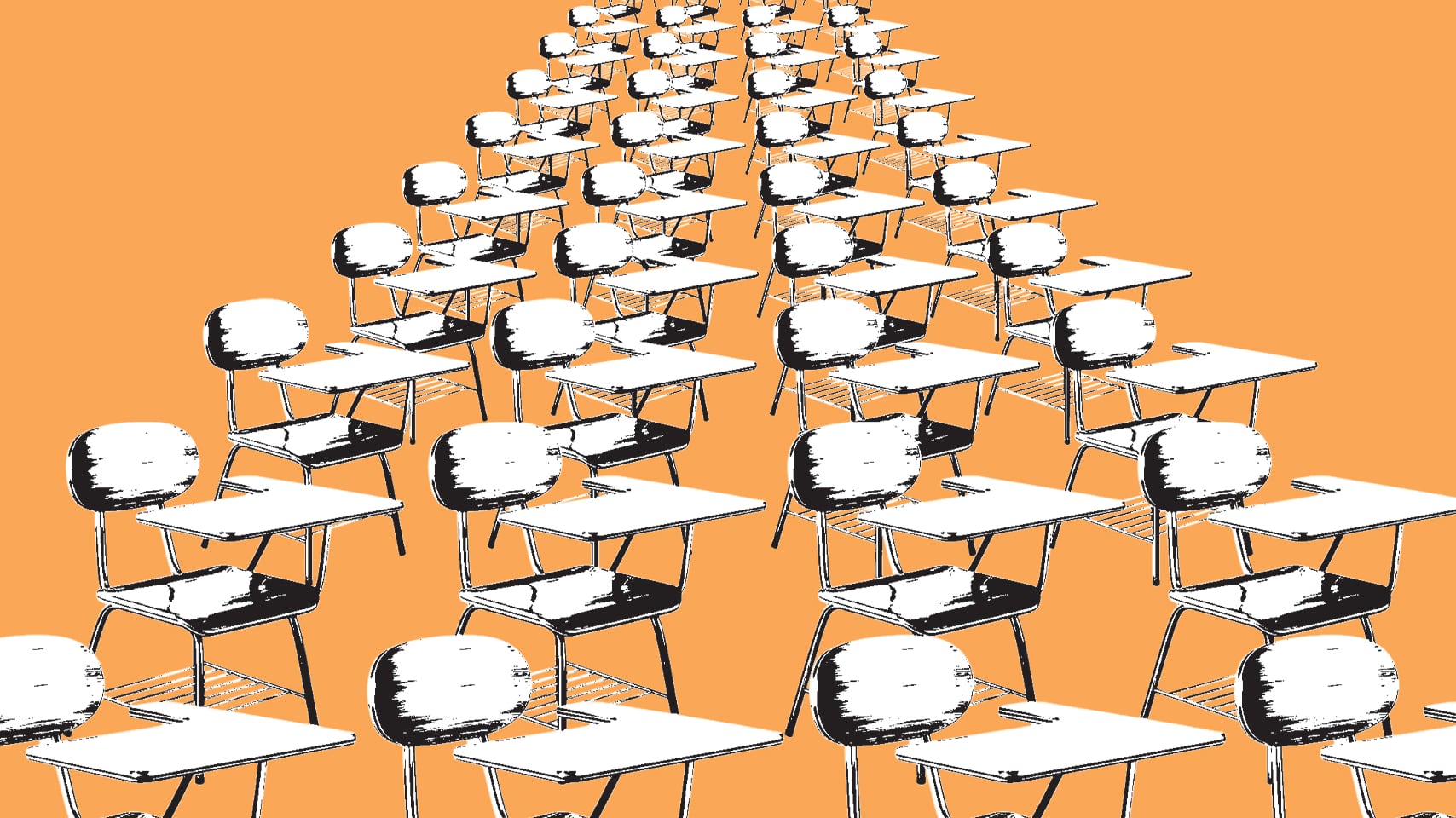Conversations about class size have swept across Oregon over the past few years, particularly for students in elementary grades.
Teachers have largely driven discussions, advocating for smaller class sizes to ensure students get individualized attention and educators are well prepared. Accordingly, one of the top priorities this legislative session for the Oregon Education Association, the statewide teachers’ union, is that class size becomes a mandatory part of collective bargaining at all school districts.
But some education experts say lowering class sizes is an expensive intervention that produces only marginal results.
Sara Kerr, vice president of education policy implementation for Results for America, a good-government nonprofit, says reducing class size can be costly because teachers are the heaviest expense for any school district.
“We really need to pair more funding with guardrails for what that money is spent on, how it’s spent, and clear, high expectations for what kind of results we should see at the end of the day,” Kerr says. “Teacher satisfaction is important. But if teacher satisfaction is not leading to improved outcomes for kids, then I think it’s a real conversation about what business are we in here?”
WHY TEACHERS WANT SMALLER CLASS SIZES: State Rep. Lesly Muñoz (D-Gervais) is expected to introduce a bill this session mandating class size as a collective bargaining component. “As someone who has sat at the bargaining table, I know how hard it can be to have conversations about class size or case loads,” Muñoz tells WW. “This bill would make sure that districts and educators are able to talk about critical interventions that impact student learning, like lowering class size or adding additional instructional supports to classrooms.”
OEA writes in its legislative priority list that class size is the key component in determining an educator’s working conditions. An OEA spokesperson tells WW the bill just requires meaningful engagement on class size during negotiations, and would not require any outcome during contract negotiations.
“This bill would ensure that educators are able to advocate for the solutions that best meet the educational needs of the students in the community where they serve—whether that’s lowering total class size, hiring additional instructional specialists, adding additional prep time for educators, or one of many other interventions related to class size and caseload,” the spokesperson says.
It’s also the case that mathematically, smaller class sizes require hiring more teachers. That would mean more members for OEA, increasing the union’s political clout in Salem.
Dr. Andy Saultz, interim dean of Pacific University’s College of Education, says the underlying argument has some merit. After all, teaching a classroom of 20 students rather than one with 45 means there are 25 fewer papers to grade. Retention, he adds, is boosted when employees feel like they have agency over their working conditions.
Portland Association of Teachers president Angela Bonilla says she’s heard from many educators who feel overwhelmed by their caseloads. Many take time away from their families on nights and weekends to get students’ work graded and manage other tasks, she says. “As these budgets get tighter, the answer is always to increase the class size, and that is just not feasible when it comes to increasing our student outcomes.”
And there’s some evidence to suggest Oregon’s dismal student performance correlates with large class sizes. Oregon rates 44th in the nation for small class sizes, according to data from the National Center for Education Statistics (last collected in 2021). That year, Oregon averaged 21 students in self-contained classes at the elementary school level. (Maine reported the nation’s smallest class sizes in 2021 at just 14.2 students per elementary school class.)
Oregonians are painfully familiar with the student outcomes that emerge from those classrooms. On the latest statewide assessment, 42.5% of students demonstrated proficiency in English and language arts, and 31% in math.
“From a parent perspective, it makes a ton of sense that people gravitate toward class size reduction because it’s something that your kid is seeing and experiencing every day,” Kerr says.
WHAT THE EVIDENCE SAYS: The most famous class size study is the Tennessee Student Teacher Achievement Ratio project. The STAR study, conducted from the mid-1980s through the early 1990s, assigned random students and teachers to small classes (13 to 17 students) and large ones (22 to 25 students). Students in smaller classes experienced statistically significant improvements in reading and mathematics.
That study is the one OEA and many other advocates of smaller class sizes cite regularly as evidence that smaller can mean better. But research in the years following the STAR study has not pointed toward major meaningful results.
Part of that might have to do with the STAR study itself. Researchers Carolina Milesi and Adam Gamoran noted in a 2006 report that “schools participating in STAR had access to an ample supply of qualified teachers, sufficient physical facilities, and additional funds for participating—not typical school conditions.”
Saultz says the STAR study was important to the understanding of class sizes, but the drastic changes in class size that it modeled are unreasonable for most districts to meet. There’s another concern too. Shrinking class sizes can have the paradoxical effect of diluting teacher quality because new teachers have to be hired and they aren’t always up to the task.
In 1996, California’s Class Size Reduction Act spent more than $1 billion on reducing class sizes in kindergarten to third grade from 30 pupils to about 20. The reform created about 25,000 new teacher positions in the state. But increases in reading and math achievement, a 2009 paper by economists Christopher Jepsen and Steven Rivkin found, were offset by the large increase in teachers with no prior experience or full certification. Those teachers were also more likely to teach in schools with high shares of economically disadvantaged and minority students.
A number of studies since STAR have found that smaller classes don’t automatically produce better outcomes. One of the latest iterations of the teacher quality vs. class size trade-off came from New York University in 2017. The study’s author, education economist Michael Gilraine, found that while decreasing class size could positively affect students, most gains were canceled out by teachers newly hired to make class sizes smaller.
WHAT WORKS BETTER: As WW first reported last week, data from Georgetown University indicates Oregon has increased its education spending by 80% in the past 10 years while outcomes have worsened. So finding the biggest bang for the buck is crucial.
Kerr says that, dollar for dollar, interventions like high-impact tutoring can make a much more significant difference. They can help kids catch up, especially in the state’s post-pandemic slump. “The marginal return from class size adjustments is just low relative to other options,” Saultz adds.
But Bonilla, the PAT president, says studies that emphasize teacher quality over class size ignore the role class size plays in better teaching. “I think it’s a circle,” she says.
As a parent and education expert, Kerr says if she were to choose between placing her kids in a small class or a large class with an effective teacher, she’d always pick the latter.
“When I think about an intervention like class size reduction, I put it up against an intervention like high-impact tutoring,” Kerr says. “You are reducing a class on the margins by three or four kids versus investing in an interventionist that can work across multiple grades, multiple classrooms.…Intervention would yield better, faster results.”

